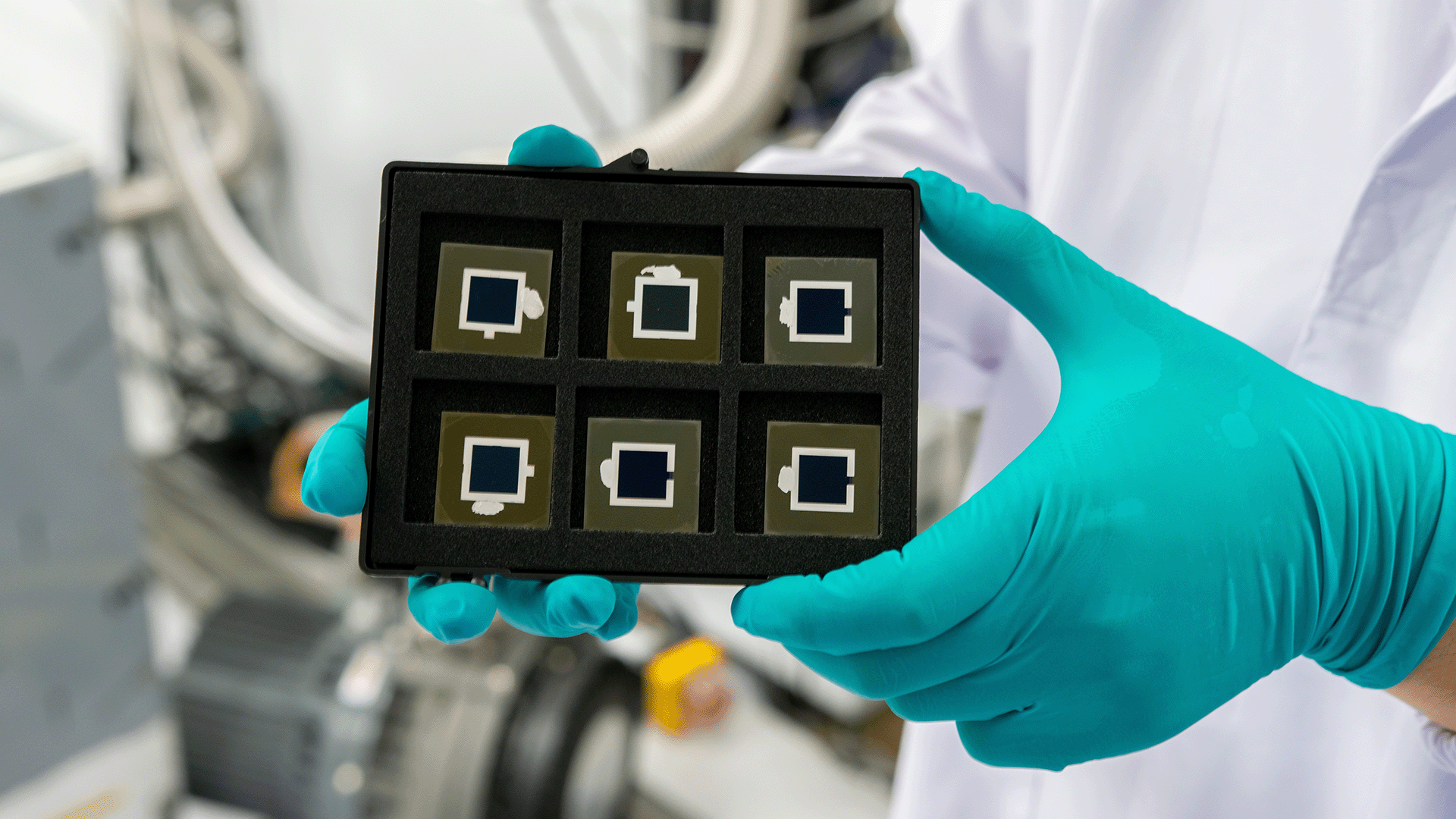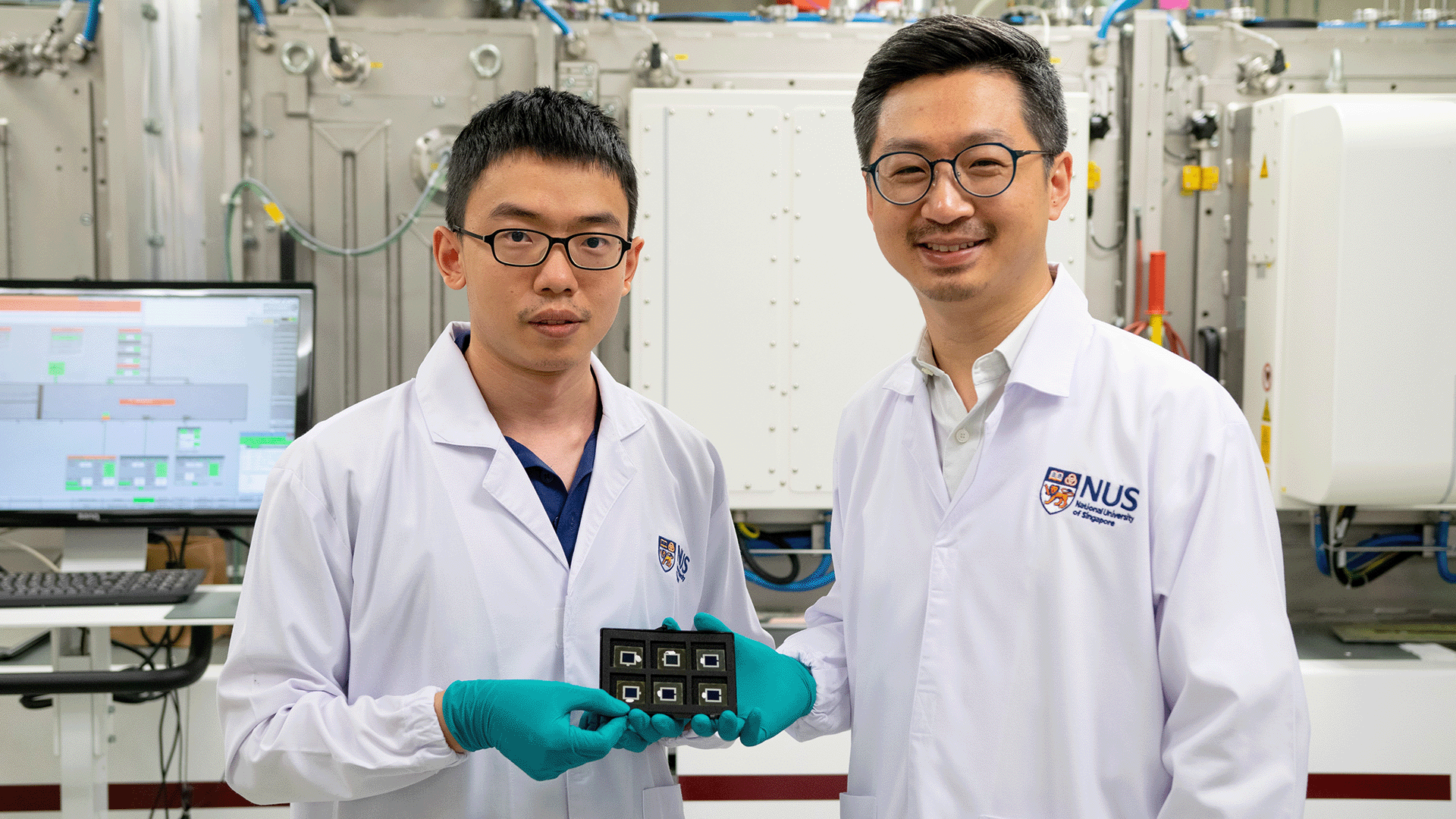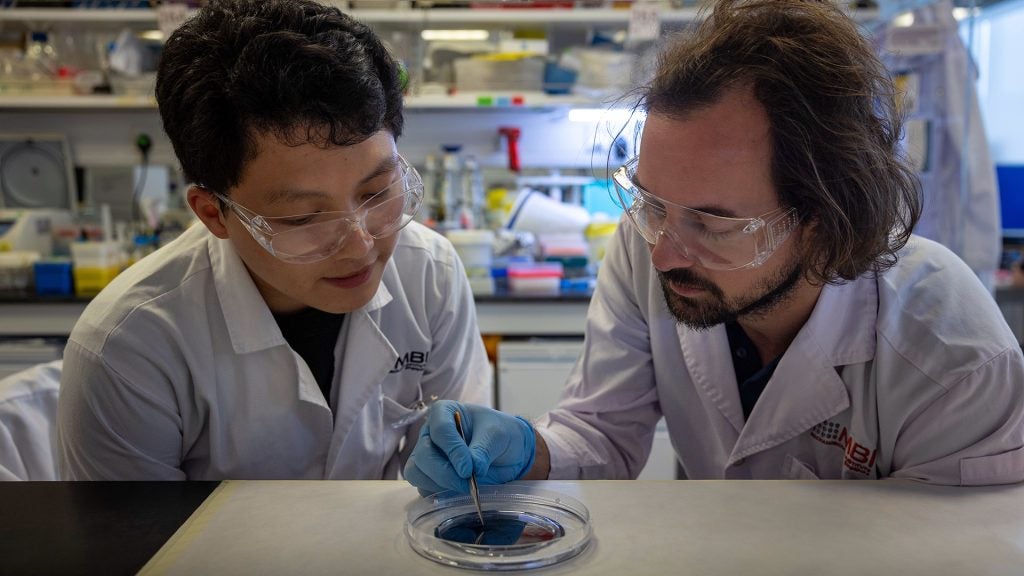
A new triple-junction perovskite/silicon (Si) tandem solar cell with a certified world-record power conversion efficiency of 27.1 per cent has been developed by a research team from CDE and the Solar Energy Research Institute of Singapore.
Led by Assistant Professor Hou Yi (Chemical and Biomolecular Engineering and the Solar Energy Research Institute of Singapore (SERIS)), the team engineered a new cyanate-integrated perovskite structure that is stable and energy efficient.
The cell is the best-performing triple-junction perovskite/Si tandem solar cell thus far developed and could potentially achieve over 50 per cent efficiency, offering significant possibilities for diverse applications in harnessing solar energy, especially in situations with limited space.
Solar cells can be fabricated in more than two layers and assembled to form multi-junction solar cells to increase efficiency. Each layer is made of different photovoltaic materials and absorbs solar energy within a different range. However, current multi-junction solar cell technologies pose many issues, such as energy loss which leads to low voltage and instability of the device during operation.
To overcome these challenges, Asst Prof Hou and his team were able to demonstrate, for the first time, the successful integration of cyanate into a perovskite solar cell to develop a cutting-edge triple junction perovskite/Si tandem solar cell that surpasses the performance of other similar multi-junction solar cells.

“Remarkably, after 15 years of ongoing research in the field of perovskite-based solar cells, this work constitutes the first experimental evidence for the inclusion of cyanate into perovskites to boost the stability of its structure and improve power conversion efficiency,” said Asst Prof Hou.
The research team’s findings were published recently in the journal Nature.
The interactions between the components of the perovskite structure determine the energy range that it can reach. Adjusting the proportion of these components or finding a direct substitute can help modify the perovskite’s energy range. However, prior research has yet to produce a perovskite recipe with an ultrawide energy range and high efficiency.
In their study, the NUS team experimented on cyanate, a novel pseudohalide, as a substitute for bromide – an ion from the halide group that is commonly used in perovskites. Dr Liu Shunchang, Research Fellow in Asst Prof Hou’s team, employed various analytical methods to confirm the successful integration of cyanate into the perovskite structure and fabricated a cyanate-integrated perovskite solar cell.
Further analysis of the new perovskite’s atomic structure provided – for the first time – experimental evidence that incorporating cyanate helped to stabilise its structure and form key interactions within the perovskite, demonstrating how it is a viable substitute for halides in perovskite-based solar cells.

When assessing performance, the researchers found that perovskite solar cells incorporated with cyanate can achieve a higher voltage of 1.422 volts compared to 1.357 volts for conventional perovskite solar cells.
The researchers also tested the newly engineered perovskite solar cell by operating it at maximum power for 300 hours under controlled conditions. After the test period, the solar cell remained stable and functioned above 96 per cent capacity.
Encouraged by the performance of the cyanate-integrated perovskite solar cells, the NUS team took their discovery to the next step by using it to assemble a triple-junction perovskite/Si tandem solar cell. The researchers stacked a perovskite solar cell and a silicon solar cell to create a dual-junction half-cell, providing an ideal base for the attachment of the cyanate-integrated perovskite solar cell.
Once assembled, the researchers demonstrated that despite the complexity of the triple junction perovskite/Si tandem solar cell structure, it remained stable and attained a certified world-record efficiency of 27.1 per cent from an accredited independent photovoltaic calibration laboratory.
“These advancements offer ground-breaking insights into mitigating energy loss in perovskite solar cells and set a new course for the further development of perovskite-based triple junction solar technology,” said Asst Prof Hou.
Looking ahead, the researchers aim to upscale and advance the technology to larger modules with future research focusing on innovations at the interfaces and composition of perovskite.





